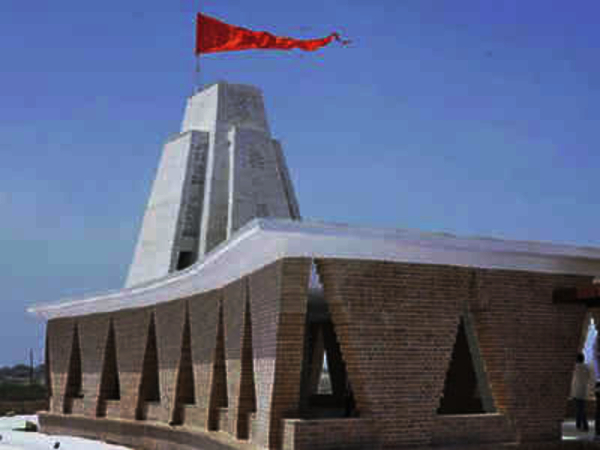Cheti Chand, which marks the start of the Sindhi new year, is usually celebrated by members of the community away from home soil, which became a part of Pakistan at the time of Partition.
This year, though, on a parched plot of land in Gujarat’s Kutch that was a part of the erstwhile Sindh province and at the very spot on the banks of Kori where river Sindhu is believed to have once ended its journey, Sindhis got their own sacred spot, their holy of holies, the Jhulelal Tirthdham.
Described as “a centre for global Sindhi identity,” the Tirthdham, which is coming up on 33 acres of arid land here in Lakhpat, saw the inauguration of its first phase as the newly built Jhulelal temple was opened.
With the presiding deity, Jhulelal, watching benignly from a fish-shaped pedestal made of pristine white marble (legend has it that Jhulelal came out of sea riding a fish to save the Sindhis from a merciless medieval king), groups of devotees visited the temple on the Hindu Sindhi new year day in April. Standing in supplication and amid chants of mantras by priests, they prayed and partook of prasad, the “mitha pulao”, a sweet dish made of rice and sugar, before dispersing.
A few minutes’ walk from the shrine, on the open courtyard of the state guesthouse, devotees assembled to hear soulful Sindhi bhajans sung by local musicians. Many elderly men and women, after a sumptuous lunch of authentic Sindhi cuisine, danced joyously as devotional songs and music filled the air.
The plan for this one-of-a-kind pilgrimage place is grandiose. Placed between two Hindu holy sites, Koteshwar and Narayan Sarovar, the Tirthdham is meant to be, for the Sindhis, their own Mecca, Kashi, Shirdi, Akal Takht and Vatican.
“The complex will reflect everything that Sindhis and their culture stand for. In addition to the temple, the complex will have a massive Jhulelal statue, a convention hall, an auditorium, a museum-cum-library, a guesthouse and much more,” says a visibly exhilarated historian and former Mumbai college principal Subhadra Anand.
Much before wealthy Sindhis like the Mumbai-based diamantaire Dilip Lakhi and realtor magnet Harish Fabiani flew down to Bhuj, the nearest airport, before driving down nearly 200km to the Tirthdham on Cheti Chand, it was Anand who talked of building such a centre at a seminar years ago at Adipur, a town which is home to thousands of Sindhis who migrated in 1947.
“It is now the collective dream of the Sindhi community. It will be a site of which our present and future generations will be proud of,” says Lakhi, seated at his plush office in Mumbai’s upscale Bandra Kurla Complex (BKC). Fabiani, who too has donated for the project, calls it a “dream close to my heart”.
Source: ToI
Image Courtesy: ToI
You may also like
-
IAF Aircraft Set Course For Exercise Eastern Bridge VII At Oman
-
India-us Working Together In Areas Like Critical Minerals, Supply Chains And Advanced Technologies: Shri Piyush Goyal
-
Defence Secretary to co-chair 5th India-Philippines Joint Defence Cooperation Committee meeting in Manila
-
2nd India-Japan Finance Dialogue held in Tokyo on 6th September, 2024
-
Prime Minister, Shri Narendra Modi welcomes Crown Prince of Abu Dhabi
